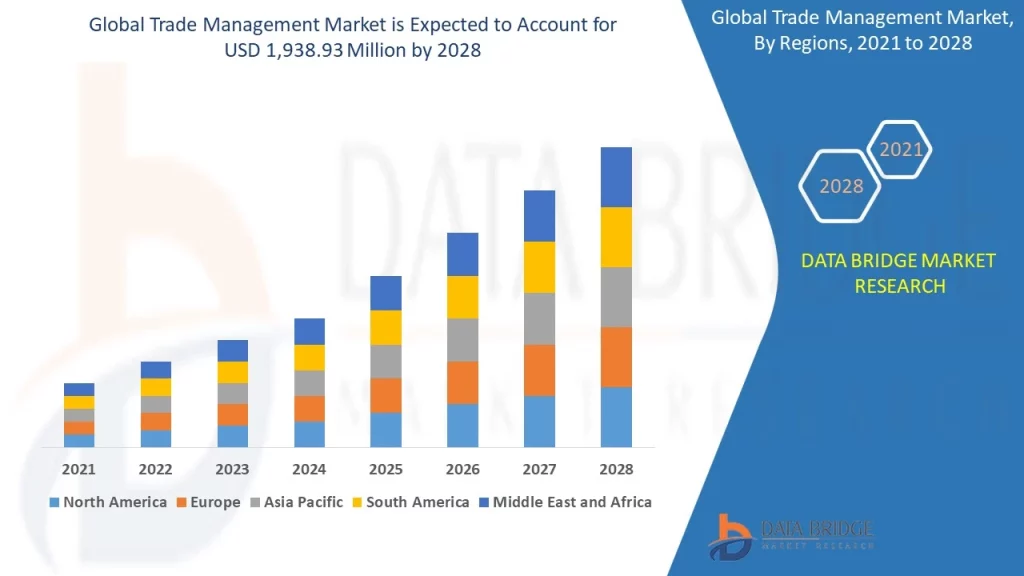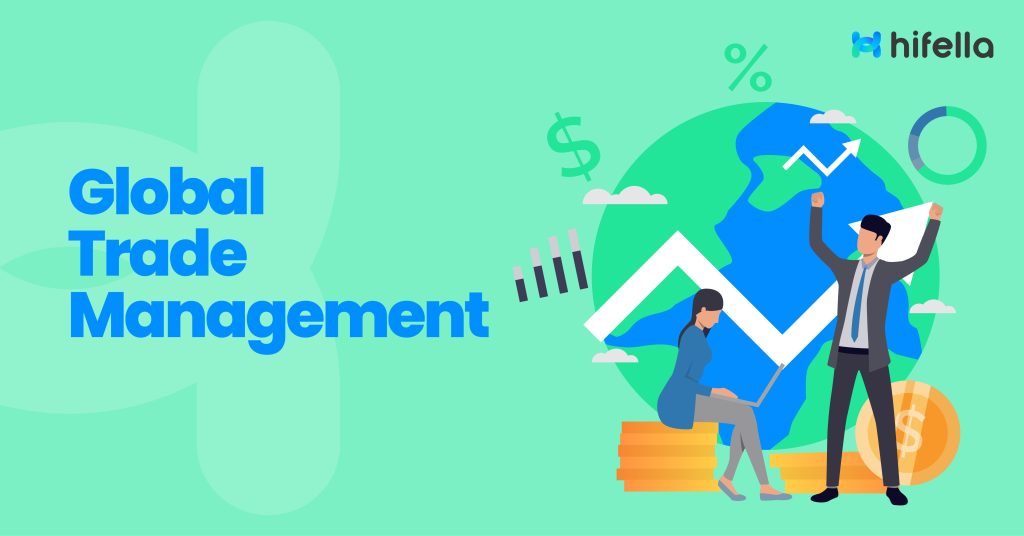Getting started in global trade management means dealing with rules, processes, and challenges.
In this article, we will learn what is Global Trade Management (GTM), which offers a comprehensive guide to understanding its components and handling the challenges of international business.
Whether you are a professional or a beginner, this article can provide insights to help you understand the trade process and confidently navigate the global market in this era.
Definition of Global Trade Management

According to SupplyChain, global trade management involves optimizing the entire life cycle of international trade. This includes order processing, logistics, and settlement activities that significantly improve operational efficiencies and cash flow.
This optimization makes it easier for information, funds, and goods to be exchanged within global trade supply chains involving buyers, sellers, and various intermediaries like customs agencies, banks, and freight forwarders.
On the other hand, unlike domestic distribution management, global trade management brings challenges such as multiple languages, time zones, currencies, and transport models.
However, some companies still need to rely on outdated systems that require employees to analyze data-filled spreadsheets manually.
The complexities of modern supply chains necessitate automation because its absence can introduce human error and interpretation, thereby leading to severe consequences.
Key Components of Global Trade Management

Global trade management or GTM aspects include trade compliance, logistics, trade finance, and risk management. These elements are crucial in simplifying the entire global trade cycle and effectively managing any potential risks that may arise.
1. Trade Compliance
Following trade rules is trade compliance. It means checking details, preparing customs papers, and managing duties.
Using global trade management software can make these tasks automatic. This helps companies follow trade rules, save money, and handle the challenges of international business in a changing world.
2. Logistics
Moving goods across borders is logistics in global trade management. Good global trade management practices help companies manage trade efficiently.
They can centralize or decentralize trade management, improving efficiency, consistency, and accuracy while reducing compliance risks. Companies can use detailed data to make smart decisions that push the business forward.
3. Trade Finance
Trade finance is about money in international trade. Global trade management covers payment terms, letters of credit, and export financing.
A complete global trade management solution shows all the costs in the supply chain, like transportation and taxes. It also helps reduce risks and penalties by checking transactions for restrictions.
4. Risk Management
In global trade, managing risks is crucial. Global trade management solutions help companies protect their reputation, avoid delays and fines, and stay competitive.
They integrate global trade with the entire supply chain, helping businesses find opportunities, track certificates, and reduce risks.
By implementing suitable technology and effective strategies, businesses can reduce costs significantly and ensure they comply with constantly evolving trade regulations. This enables them to gain a competitive advantage in today’s uncertain business environment.
Revealing the Global Trade Statistics: Growth and Markets
Let’s look at the numbers that show how much global trade has grown and how big it is. We’ll also see how these figures show the changes in international trade over the years.
a. Global Trade Growth
According to Our World in Data, the value of goods traded globally is almost 25%, a huge increase over the past centuries. The Department for Business and Global Trade Outlook report says that in 2021, global trade reached a record high of $28.5 trillion.
The World Trade Organization (WTO) adds that since 1995, world trade volume and value have expanded around 4% and 6% on average. These numbers highlight the big growth in global trade and how markets are closely linked.
Global trade is predicted to increase at a rate similar to the overall growth of the global economy in the next three decades. It is anticipated to double in real value and nearly quadruple in dollar terms by 2050, reaching a value close to $100 trillion.
b. Global Trade Markets
The way the world does business is changing. More and more, people are spending money on services rather than goods. By 2035, it’s expected that 77% of the world’s money-making activities will be in services, like healthcare or entertainment, up from 75% in 2021.

Also, according to Data Bridge Market Research, in 2028, the trade management market was worth $1,938.93 million, and it’s estimated to grow by 10.00% every year from 2021 to 2028. T
The Data Bridge Market Research Report on trade management gives an analysis and insights about different things that are likely to happen during this time and how they will affect the market growth.
The Challenges of Global Trade Management
Global trade management challenges are multi-faceted, including regulatory compliance, tariffs, customs procedures, and geopolitical considerations.
a. Impacts on Global Trade Professionals
These challenges significantly impact global trade professionals, affecting new regulatory changes, tariffs, and sanctions and adopting global trade technology to address the growing skills gap and automation.
b. Fluctuating Trade Regulations
Dealing with changing trade regulations and possible fines for not following them makes managing global trade a bit tricky.
However, using the right technology and following good methods can help companies overcome these challenges. This saves costs and ensures that businesses follow global trade rules, thus minimizing expenses in an unpredictable world economy.
According to BSM, different laws apply to products shipped through global trade. For example, when sending something from the United States to the European Union, checks are made to ensure that the product does not involve prohibited parties.
If it is a product that can be used for more than one purpose, you will need a special license, and the product will be inspected.
Then come the necessary shipping papers. You have to file export and import declarations to find out the HS code and customs value.
If you don’t follow these rules, it can cause delays, and exporters may face financial restrictions and penalties. This applies in most countries, whether you’re sending or receiving goods.
c. Role of Global Trade Management Software
Global trade management software is crucial in automating regulatory trade compliance, duty management, customs documentation, and customs filings, enabling companies to achieve millions of dollars in duty savings, avoid customs delays and fines, and gain a competitive advantage.
d. Geopolitical Considerations
Geopolitical considerations, such as trade wars, political tensions, and shifting alliances, also pose significant challenges for global trade management.
For example, the ongoing U.S. and China trade war has significantly impacted global trade, leading to the imposition of tariffs, export controls, and other trade restrictions that have disrupted supply chains and affected businesses operating in these markets.
In summary, the challenges of global trade management are diverse and dynamic, requiring companies to stay abreast of regulatory changes geopolitical developments, and adopting technology and best practices to ensure compliance, minimize costs, and maintain a competitive edge in the global marketplace.
Explore Global Opportunities with Hi-Fella
Get the chance to trade globally with Hi-Fella, the leading B2B marketplace platform that connects thousands of manufacturers, suppliers, and potential buyers in one convenient platform.
Join now to tap into a wealth of knowledge, connect with industry professionals, and stay ahead of the ever-evolving world of international trade!






